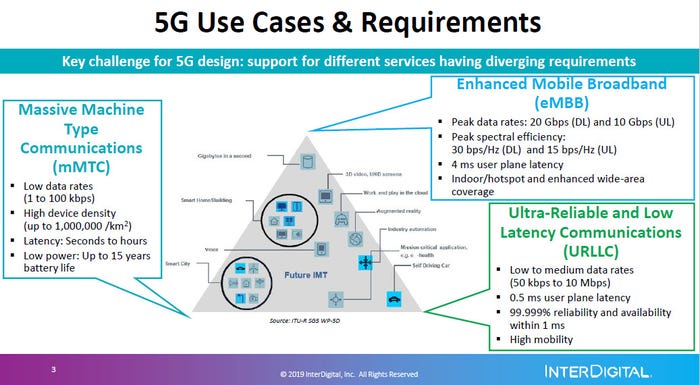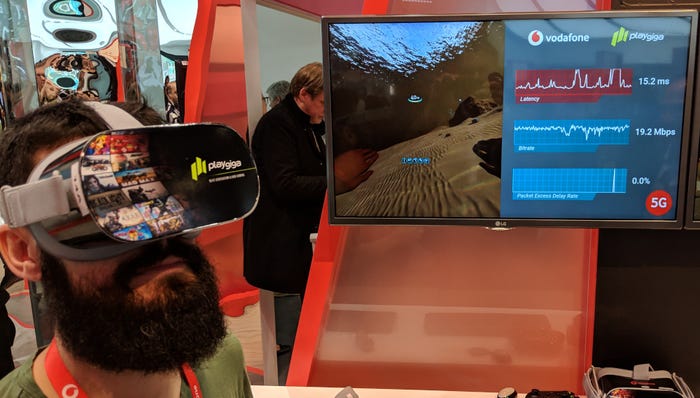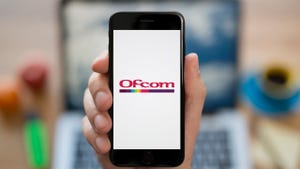5G reaches an anticlimax at MWC 20195G reaches an anticlimax at MWC 2019
After years of fooling around 5G finally arrived at this year’s big telecoms coming-together, but now a lot of people just feel disappointed and used, and are left asking "is that it?"
February 26, 2019

After years of fooling around 5G finally arrived at this year’s big telecoms coming-together, but now a lot of people just feel disappointed and used, and are left asking “is that it?”
The hype cycle for 5G seems to have been especially prolonged and intense, arguably exceeding even the utopian fervour of the build up to 3G, which left the operator industry so over-committed and under-rewarded. 4G was mainly about doing mobile broadband properly, but 5G was supposed to revolutionise the telecoms industry. At this early stage, however, there is little sign of that.
In hindsight the build up to the show offered a strong indicator of the anticlimax to follow. The big kit vendor announcements were all about fine-tuning their 5G propositions and playing it safe. That was certainly the case with Ericsson and Huawei, while Nokia didn’t even have a pre-show event, contenting itself with just a webcast.
Nokia does have a major event in Barcelona on the Sunday of the show and, while it went big on 5G, the most it had to show for it commercially at this early stage was fixed wireless access. 5G offers the opportunity to provide high speed broadband to locations that can’t get a decent fixed-line service, for whatever reason, but even Nokia’s own forecasts aren’t especially bullish about the FWA total available market. So it feels more like an early way for operator CTOs to show some ROI from their 5G capex.
With the exception of a juicy bit of M&A action, Ericsson’s MWC event felt a bit flat. Meanwhile Huawei can’t escape the backdrop of the geopolitical spat it has found itself in the middle of, and almost seems ready to give up on some western markets entirely. At least one operator CEO reckons it would be disastrous for the industry if it did. A major theme of the show has been hacks trying in vain to get juicy quotes from anyone on the Huawei situation.
Aside from a bit of light FWA most of the 5G buzz has been generated by the arrival of 5G phones. The fact that some of them also come in a novel new foldable format just adds to the intrigue but those are far too expensive to be considered anything more than public prototypes and, anyway, where are the 5G networks for them to connect to?
To investigate why the arrival of 5G has elicited such a collective ‘meh’ from the industry we need to look at the three main technological subsets that are generally considered to comprise it. They are: Enhanced Mobile Broadband, Massive Machine-type Communications and Ultra-Reliable/Low-Latency Communications. These are illustrated in the slide below from a recent presentation given by Interdigital, which is already wondering what’s next for 5G, as is Qualcomm if the the photo taken of its stand above is anything to go by.

EMBB is essentially more 4G, in so much as it’s essentially a fatter pipe, enabling faster data transfer rates. The problem is there is currently little need for 1 Gbps+ mobile broadband data rates and 5G cheerleaders are reduced to banging on about streaming 4K video, which is completely pointless on a mobile device anyway since the screens are too small to make use of it.
MMTC is otherwise known as IoT and, while it has massive potential, it’s debatable how accurate it is to describe it as a 5G technology. IoT has been progressing just fine without 5G and the standardisation process is largely independent of it. Furthermore some IoT applications can even be satisfied by 2G, so it’s not plausible to position IoT as the killer app for 5G.
The really novel, disruptive technology promised by 5G is the low-latency/ultra-reliable play. At first, talk of latency and reliability seems very technical and dry, but when you start to see some of the opportunities offered by removing the delay in transmitting a signal from one point to another, no matter how far apart they are, you get a sense of the full potential of this aspect of 5G.
On the Ericsson stand we bumped into our old friend Professor Mischa Dohler, who at MWC 2017 felt moved to defend the potential of 5G-enabled remote surgery, after we had used it as an illustration of how ahead of itself the industry had become over 5G. Dohler confirmed our suspicion that low-latency is where the real action is going to be, and pointed us towards the very cool video below of him duetting with his daughter over 5G while they were 1,000 kilometres apart.
Another cool low-latency use-case was provided by Javier Polo, Luis Fernando Fernandez and Juancho Carillo of Spanish cloud gaming specialist PlayGiga. They had a demo showing how cloud virtual reality is made possible by the low-latency capability of 5G and spoke about its importance for mobile cloud gaming in general.

In fact once you eliminate the delay you can bring the cloud into play in all sorts of new ways. Speaking to Alan Carlton of Interdigital, who delivered the aforementioned presentation, we explored a future in which every screen is effectively a thin client that anyone can log into and use as their own device, with all their stuff accessed instantly from the cloud. That could be truly disruptive, while at the same time massively commoditising the devices market.
So we have to concede that the 5G low-latency angle is exciting, but before you think we’ve completely contradicted ourselves over the course of this piece bear in mind that we’re nowhere near seeing it in a commercial environment. Meanwhile we’re even further away from the kind of 5G base station ubiquity you would need to make this low-latency driven all-encompassing cloud into existence.
The sense of antixclimax this year is a product of the telecoms industry’s usual vice of over-promising. Yes, 5G is finally here in its earliest form, but we’re probably still five years from having the kind of infrastructure that can support any of these utopian scenarios. So this year we have FWA and the first devices, but unless each subsequent MWC is accompanied by at least one major new 5G-enabled use-case they risk feeling as anticlimactic as this one. If we’re not careful, everyone will get bored and move onto 6G instead.
Lastly we should also give a special shout out to Nokia, who provide great facilities for us hacks at the show regardless of how much trouble we cause them, and from whose stand this piece was written, fuelled by excellent connectivity and miniature multi-coloured sandwiches. They give good press room.
About the Author
You May Also Like










.png?width=300&auto=webp&quality=80&disable=upscale)


_1.jpg?width=300&auto=webp&quality=80&disable=upscale)